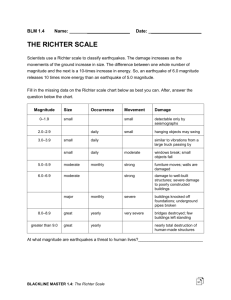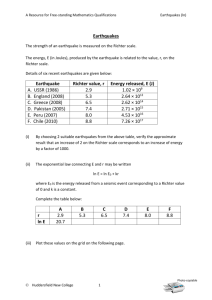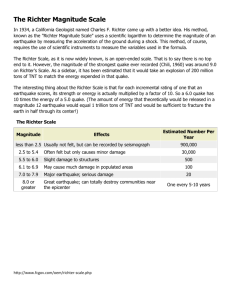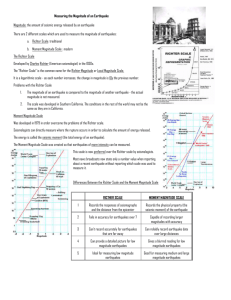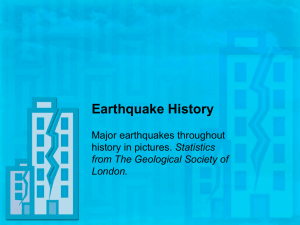measuring magnitude
advertisement
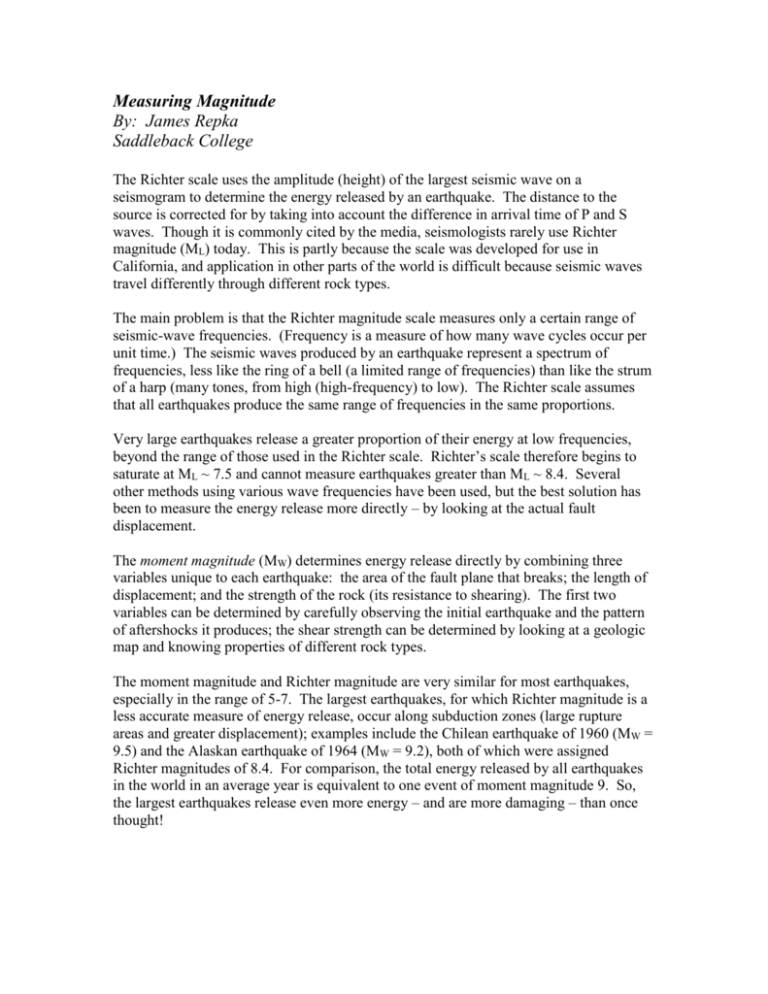
Measuring Magnitude By: James Repka Saddleback College The Richter scale uses the amplitude (height) of the largest seismic wave on a seismogram to determine the energy released by an earthquake. The distance to the source is corrected for by taking into account the difference in arrival time of P and S waves. Though it is commonly cited by the media, seismologists rarely use Richter magnitude (ML) today. This is partly because the scale was developed for use in California, and application in other parts of the world is difficult because seismic waves travel differently through different rock types. The main problem is that the Richter magnitude scale measures only a certain range of seismic-wave frequencies. (Frequency is a measure of how many wave cycles occur per unit time.) The seismic waves produced by an earthquake represent a spectrum of frequencies, less like the ring of a bell (a limited range of frequencies) than like the strum of a harp (many tones, from high (high-frequency) to low). The Richter scale assumes that all earthquakes produce the same range of frequencies in the same proportions. Very large earthquakes release a greater proportion of their energy at low frequencies, beyond the range of those used in the Richter scale. Richter’s scale therefore begins to saturate at ML ~ 7.5 and cannot measure earthquakes greater than ML ~ 8.4. Several other methods using various wave frequencies have been used, but the best solution has been to measure the energy release more directly – by looking at the actual fault displacement. The moment magnitude (MW) determines energy release directly by combining three variables unique to each earthquake: the area of the fault plane that breaks; the length of displacement; and the strength of the rock (its resistance to shearing). The first two variables can be determined by carefully observing the initial earthquake and the pattern of aftershocks it produces; the shear strength can be determined by looking at a geologic map and knowing properties of different rock types. The moment magnitude and Richter magnitude are very similar for most earthquakes, especially in the range of 5-7. The largest earthquakes, for which Richter magnitude is a less accurate measure of energy release, occur along subduction zones (large rupture areas and greater displacement); examples include the Chilean earthquake of 1960 (MW = 9.5) and the Alaskan earthquake of 1964 (MW = 9.2), both of which were assigned Richter magnitudes of 8.4. For comparison, the total energy released by all earthquakes in the world in an average year is equivalent to one event of moment magnitude 9. So, the largest earthquakes release even more energy – and are more damaging – than once thought!
